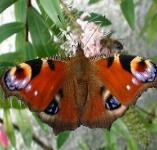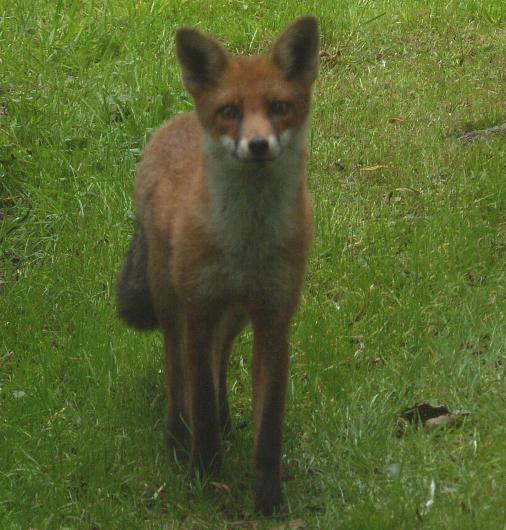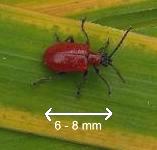
Garden Friends

Bad Habits

Garden Pests
| HOME | SITEMAP | SEARCH | ARTICLES |
 Garden Friends |
 Bad Habits |
 Garden Pests |
The pages in this section of the site have some common garden creatures that you might encounter while gardening. Not all are enemies and can indeed be beneficial, eg. preying on other creatures which damage crops or flowers. It is a fundamental law of nature to eat and be eaten so the beneficial creatures need a supply of what we consider pests, to survive. We may have replaced our hunter-gatherer skills with a shopping trolley, smartphone or credit card, but this option is not available in the wild, so the complete removal of slugs and snails would seriously affect the diet of some birds. If they are not having a detrimental effect, then leave them alone as they all form part of the natural balance between flora and fauna which gives us the beauty we all strive for. Indeed, the idea of having a wildlife-friendly garden is becoming more popular, but there are times when we have to intervene to redress that balance most likely because we upset it in the first place to suit our idea of a garden. When plants are grown as a monoculture this will favour anything that feeds on it and if there is nothing to curtail it as there probably would be in a more mixed environment, the numbers can get out of hand.
Some plants have been shown to put up defences when attacked. When nibbled by a deer, beech trees make their sap more bitter so discouraging further attack. Pine trees release a cloud of odour that attracts Ladybirds when attacked by Pine Aphids.
There are many different methods to deal with the smaller creatures that have become a pest, from picking them off the plants being attacked to the use of pesticides. The choice is down to the individual, but regard should be made to the environment and the other creatures that can be affected as pesticides tend not to be selective. Most have been taken off the market, particularly for the amateur gardener and there are ongoing assessments of the remaining ones. Neonicotinoid insecticides have been implicated in the reduction of pollinating insects and are currently banned in some countries with restricted use in others. They have systemic action so are taken into the plant and anything that feeds on it will take in the poison - this includes the sap, nectar or pollen.There are some real villains, Vine Weevils and New Zealand Flatworms being most notable. These two add to their dastardliness by the fact that they do not need a mate to reproduce (parthenogenesis), so if only one individual is brought into the garden they can establish themselves. There are a few new "aliens" which have been spotted recently. The big problem with introduced species is that they are not part of the existing food chain so may not have a natural predator; our biggest defence against them is our climate, which fortunately kills off most of the creatures accidently carried here on plants or in food imports. However, the recent general warming in the weather has allowed some of them to survive.
Here in Ireland we are fortunate to have been spared the presence of moles and snakes. The former being the bane for the keen lawn keepers, but we would not have had the cure for toothache used up until the 18th century which involved hanging a dead mole around the neck even to relieve teething pains in babies - perhaps more of a distraction than a cure. Usually it is the larval stage of an insect's life cycle that is the most destructive so it could be thought of as the main life-form and what is considered the 'adult' is just the reproductive stage as the life-span can be relatively short compared th the larva. For example the Cockchafer grub can live for 4 to 5 years, whereas the adult is only around for 5 to 7 weeks. In some species 'adults' are only around for a few hours or days, just long enough to find a mate and lay some eggs.Some can be used to control others which are present in abundance and are damaging ornamental or crop plants. These biological controls have to be introduced carefully or they can become pests themselves.
Plants have their own defenses either physical in the form of prickles or thorns and by producing toxins to make themselves unpalatable or even kill their attacker. Some of the insecticides contain these toxins, eg. nicotine, derris and pyrethrin. Recent research has found that some can release volatile organic compounds which warn their neighbours that they have been attacked and this stimulates the others to produce defensive toxins. Plants can be genetically modified to produce these defenses against attack.
While there are many proprietary products for dealing with pests their side effects are not always desirable. Over the centuries gardeners have made concoctions of their own, some of which are described on the Recipes page. To avoid using any kind of pesticide, studying the life-cycle and behaviour of the culprit can provide a solution. For example, overwintering pupal stage of some sawfly pests can be exposed by cultivating the soil around a plant which had been attacked earlier and birds will find them.The creatures described here have been arranged as Friends, those with Some Bad Habits and The Enemy depending on how they behave in the garden. Some of the friendly creatures may not do anything physical to help, but their presence adds to the pleasure of the garden. The life cycles of insects involve forms which can have different diets, so although Moths are considered benign and important pollinators, their larvae are amongst the most destructive to plant-life.
Follow the links below to the different galleries which have thumbnail pictures with links to monographs on the relevant creature.
Garden Friends
Bad Habits
Garden PestsBack to Down Garden Services Home Page,
or use the drop-down menus at the top of the page to find other garden-related information.Or use the back button of your browser to return to previuos page